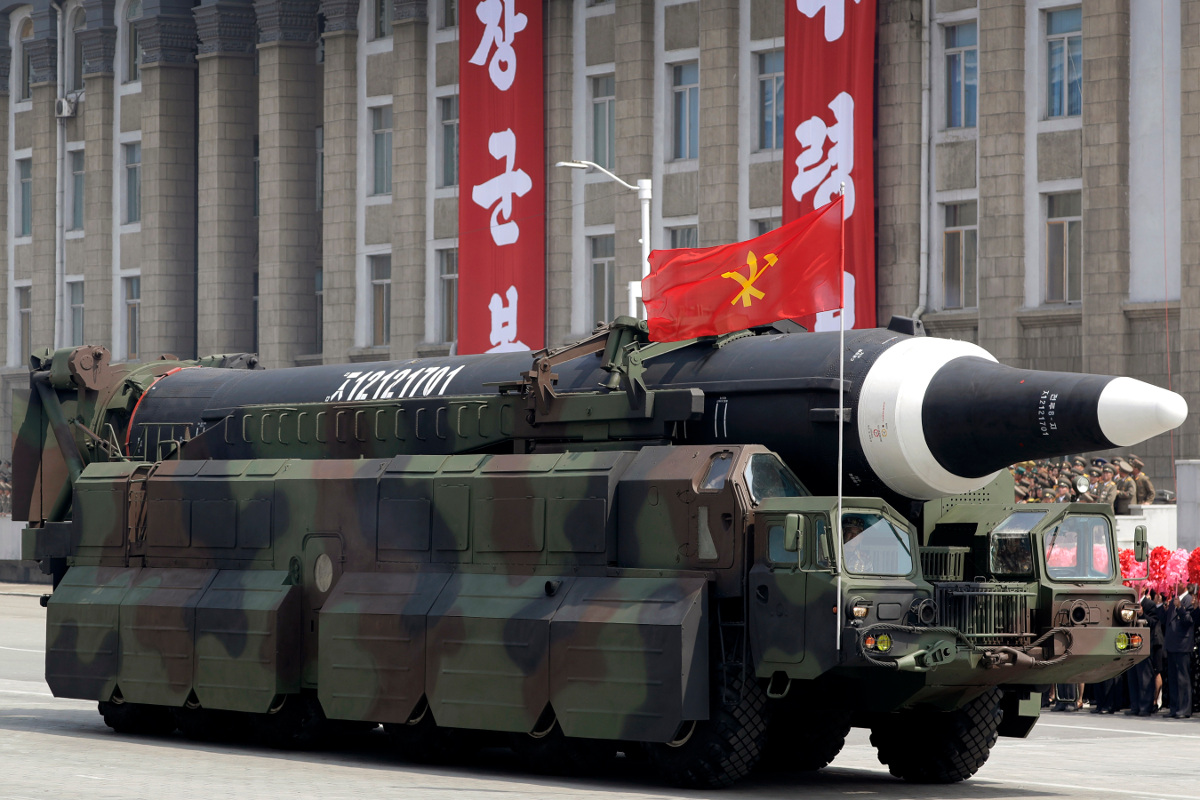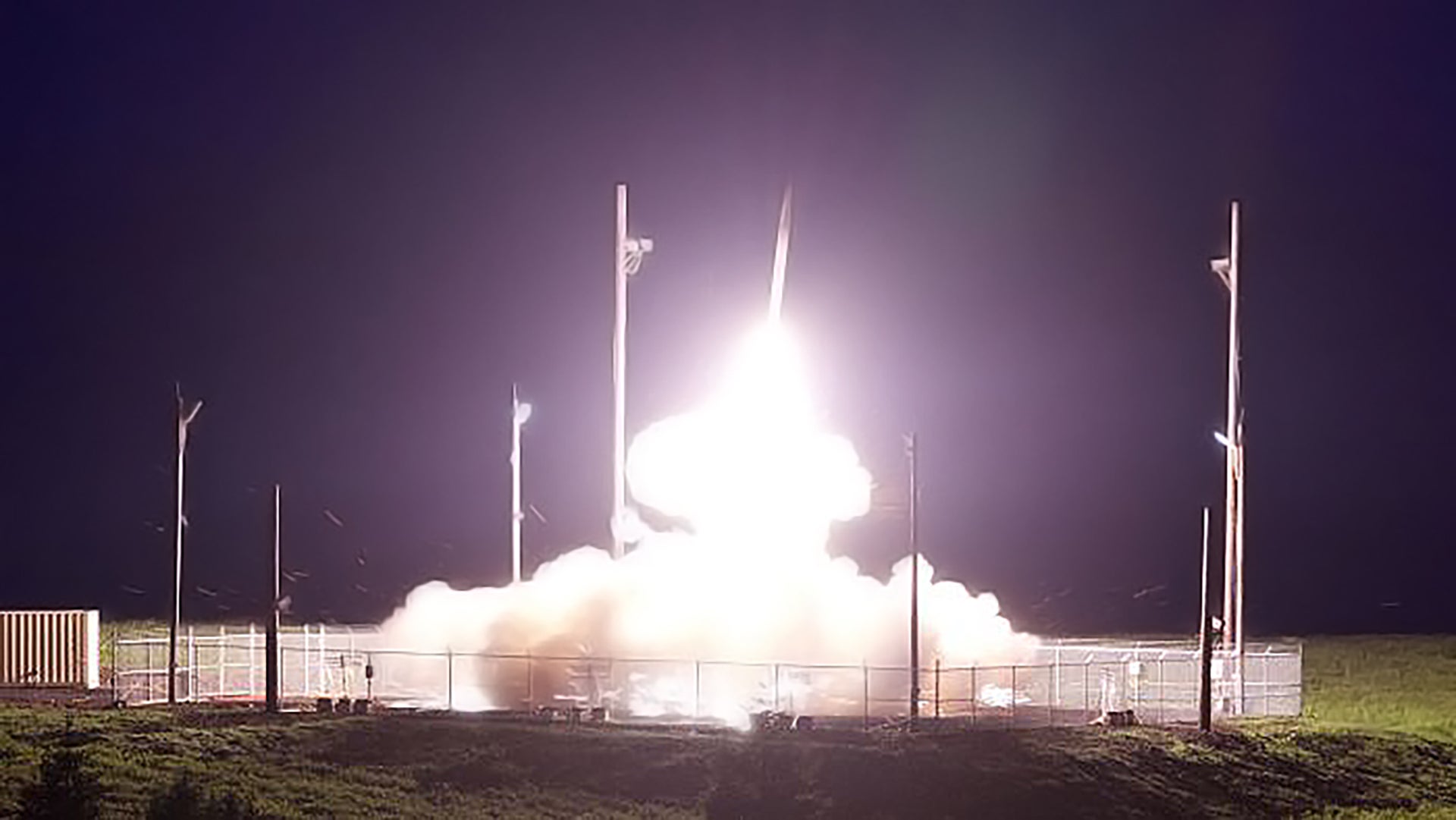The U.S. Coast Guard has revealed upcoming plans for an unspecified missile test in Alaska. The launch site is the same one that has hosted U.S. military experiments involving the Terminal High Altitude Air Defense (THAAD) system and the announcement comes amid increased concern and warnings about North Korea and other potential enemies expanding their ballistic missile capabilities.
On July 19, 2017, the Coast Guard distributed a safety notice to mariners advising them to keep away from a large section of the Pacific Ocean stretching from Kodiak Island in Alaska to Hawaii, according to an initial report by the Kodiak Daily Mirror. The message said the test launch would occur at the Pacific Spaceport Complex-Alaska (PCSA) overnight on July 29-30, 2017, but could end up rescheduled for the next two nights.
The alert did not describe the missile system or parties who would be involved in the launch. Private contractor Alaska Aerospace Corporation manages PCSA, situated on Kodiak Island, and hosts U.S. and foreign military programs, as well as scientific research and commercial projects. The Coast Guard routinely takes parts in these events in order to secure the test range both to keep individuals away from any hazards and provide security for the often sensitive experiments.
Though we don’t know what this specific test will entail, one possibility is the U.S. military’s Missile Defense Agency (MDA) is preparing to conduct its second THAAD test of the year. On July 11, 2017, the agency reported that one of the system’s interceptors had successfully destroyed a surrogate intermediate-range ballistic missile (IRBM) for the first time ever. MDA also released official video of the event, seen below.

This launch, known as Flight Test THAAD 18, or FTT-18, was just one of two MDA planned for the U.S. government’s 2017 fiscal year, which ends on Sept. 30, 2017. There was also no public announcement of exactly when that test would occur beforehand. Still, in January 2017, in announcing the decision to use PCSA for these and future tests, MDA spokeswoman Leah Garton confirmed to Inside Defense that both THAAD launches would occur sometime in “late fiscal year 2017.”
In a hearing in June 2017, U.S. Navy Vice Admiral J.D. Syring, head of MDA, said the second experiment, FTT-15, would involve collecting data on the system’s endo-atmospheric capabilities against a mock medium-range ballistic missile (MRBM) “with associated objects.” These additional items might stand in for decoys trying to throw off THAAD’s interceptor or the long-range AN/TPY-2 radar, which is essential for detecting and targeting incoming missiles.
FTT-18, “in addition to previous flight testing and FTT-15 … , will demonstrate several key capabilities against longer range threats that the MDA should further explore using end-to-end modeling and simulation,” the Pentagon’s Office of the Director of Operational Test and Evaluation wrote in a 2016 review of the THAAD program’s progress. The office added that MDA and its Ballistic Missile Defense System Operational Test Agency “should plan to conduct high-fidelity modeling and simulation runs against longer range threats following the FTT-18 and FTT-15 flight test campaign, to include endgame and lethality analyses for these tests.”

The THAAD test and evaluation plan has already taken on a new urgency in light of North Korea’s extensive ballistic missile launches earlier in 2017. These have included the launch of the country’s first intercontinental ballistic missile (ICBM) on July 4, 2017, as well as successful demonstrations of increasingly advanced MRBM and IRBM types. This in turn had prompted complaints that the U.S. military’s missile defense test schedule was moving too slow to respond to these emerging threats.
“We are not going fast. We are so risk-averse that we only test every 18 months,” U.S. Air Force General John Hyten, head of U.S. Strategic Command, told Stars and Stripes in an interview earlier July 2017. “The best way to build rockets, the best way to move fast, is to build it, test it, instrument it, learn from your failures.”
So, even if the upcoming test is FTT-15, there may be concerns that THAAD both needs more testing and needs it yesterday. And while it is not clear whether THAAD would be able to handle an incoming ICBM, and the U.S. military has other missile defense systems for that purpose, it would be an important line of defense against the shorter range MRBM and IRBM types the North Korean military has showed off this year, including a stretched version of the BM-25 Musudan, also known as the Hwasong-12.

Those weapons have estimated ranges that would allow them to hit American forces and their allies in South Korea and Japan. In March 2017, the U.S. military began deploying THAAD batteries to South Korea, though the country’s president Moon Jae-in has put plans to expand those defenses on hold pending a new environmental review. Pyongyang’s missile forces could also target the American territory of Guam in the South Pacific, which is home to significant U.S. military facilities. The U.S. Army has had a THAAD battery in place on the island since 2013.
“Kim Jong Un’s regime is tied to [its] nuclear program, and what I can tell the American people today is North Korea is capable of launching a limited missile attack,” U.S. Marine Corps General Joseph Dunford, Chairman of the Joint Chiefs of Staff, said at the Aspen Security Forum on July 22, 2017. Still, “the United States military can defend against a limited North Korea attack on Seoul, Japan, and the United States,” he was quick to add.
“Limited” is a key caveat as THAAD may not be able to adequately respond to a barrage of ballistic missiles and decoys in its present form. Especially critical in that scenario would be the AN/TPY-2’s ability to spot and categorize a large number of incoming threats, which it might not be able to do. As The War Zone has reported on
multiple occasions, based on unclassified information, though this radar has a very long range, it may have a very narrow focus that would have difficulty tracking multiple targets coming from different directions at once.
Beyond East Asia, other American allies and partners may be similarly anxious to see the results of additional and more complex THAAD tests. The United Arab Emirates is in the process of establishing its own missile defense scheme, focused primarily on Iran’s growing ballistic missile capabilities, while Saudi Arabia has expressed interest in purchasing as many as seven THAAD batteries for the same reason.

In May 2017, a semi-official Iranian media outlet announced the construction of a third underground ballistic missile factory. “We will continue to further develop our missile capabilities forcefully,” Amirali Hajizadeh, head of Iran’s Islamic Revolutionary Guard Corps’ airspace division, said, according to the Fars News Agency. The IRGC showed off its capabilities the next month when it fired six ballistic missiles at targets in Syria, ostensibly in retaliation for earlier ISIS terrorist attacks in the country’s capital Tehran.
In addition to Iran, Saudi Arabia has found itself increasingly under threat from Yemeni militant groups with access to an arsenal of short-range ballistic missiles. These forces, linked to the regime of former President Ali Abdullah Saleh and allied with Houthi rebels, have also claimed they have the capacity to produce new and improved weapons based on existing designs, such as the Soviet-era Scud series.

Given the increasing number of ballistic missile threats in the Middle East, it is also possible that the up-coming PCSA test could support Israel’s development of its own Arrow 3 ballistic missile defense system. However, in the June 2017 hearing, Admiral Syring said the next test of this interceptor, which MDA would support at the Kodiak launch site, was scheduled to occur sometime in 2018.

As ballistic and other long-range missile technology has become more widespread, missile defense has experiencing a renaissance of sorts in general. In June 2017, Russia conducted a test of its A-135 ballistic missile defense system, which has been in place to defend Moscow from incoming ICBMs since 1995. These interceptors have a 10 kiloton nuclear warhead.
In 2010, China conducted its own anti-ballistic missile test. The exact configuration of this system or its interceptor, which may be called the DN-1, remains unclear. On July 24, 2017, there were unconfirmed reports of a second Chinese ballistic missile defense experiment involving an unknown system.
Of course, there is always the possibility that this next launch in Alaska will have nothing to do with THAAD or any military mission at all. But even after FTT-15, there are more THAAD tests already on the schedule, with another one expected to occur in the next fiscal year. That event, Flight Test Operational-03 Event 2, or FTO-03 E2, will target another mock IRBM and will involve other missile defense and surface to air missile systems, including the Aegis Ballistic Missile Defense System and the Patriot missile.
Regardless of when they ultimately happen, with threats increasing around the globe, MDA may well decide to expand its test schedule for THAAD and other systems, too, or follow the Director of Operational Test and Evaluation’s recommendations and add in additional modeling and simulations. It seems safe to say that THAAD, and just how well it actually works, will only be an increasingly important topic of discussion.
Contact the author: joe@thedrive.com
